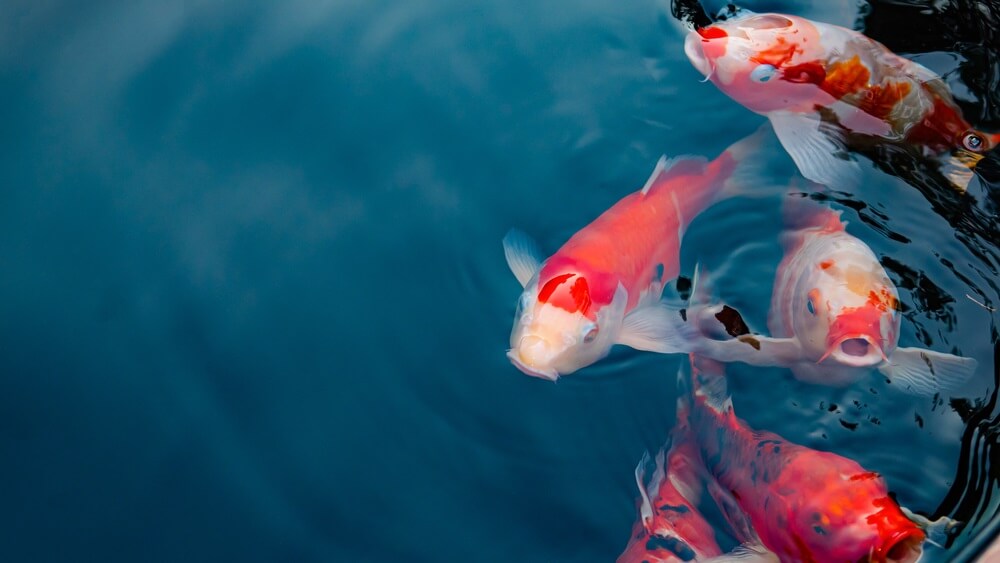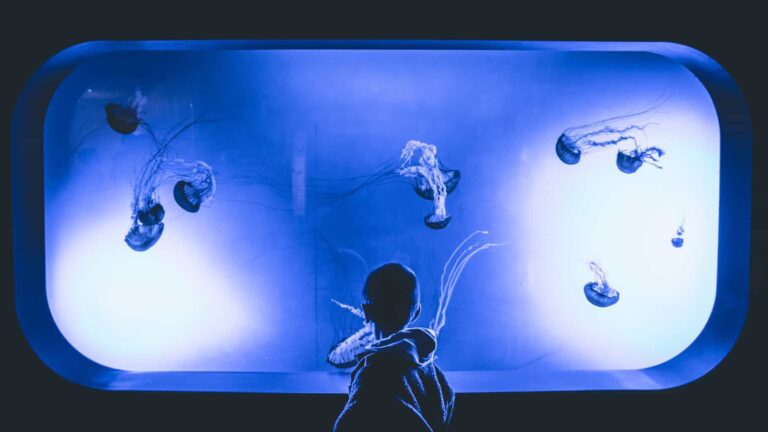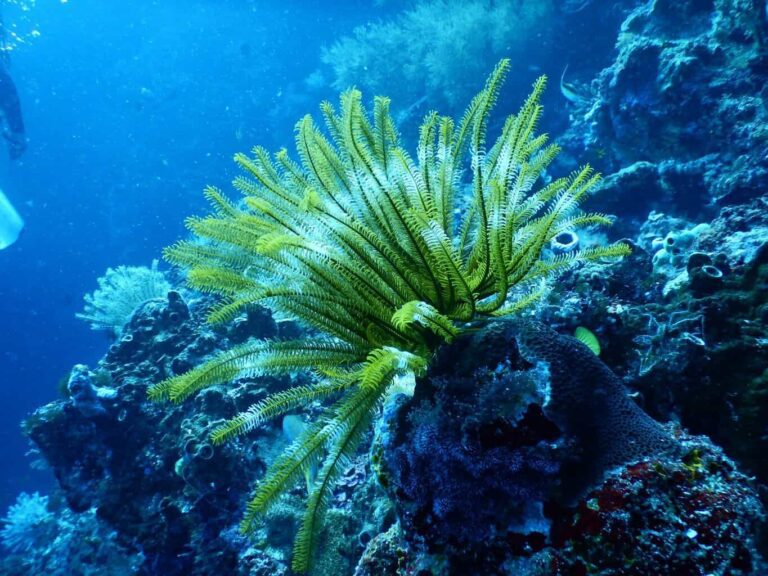One of the most popular outdoor aquariums is koi fish ponds, which feature a gorgeous, vibrant visual of colorful fish. This beautiful pond requires routine maintenance and commitment to keeping your outdoor pond a healthy, stable environment for your koi fish, aquatic plants, and other inhabitants in the water.
Since this type of pond is demanding in terms of cleaning, changing the water, filtering, and monitoring algae growth, you’ll need to establish a schedule that keeps your pond thriving with healthy plants and koi fish.

1. Setting a Routine Maintenance Schedule
Keeping your koi pond clean with a regular maintenance schedule is critical. A koi pond needs constant care, which requires a level of commitment to ensure the pond remains in excellent condition. Before you decide to install your koi fish pond, it’s essential to establish a weekly routine for water treatment, adding water, cleaning the filter, and controlling algae growth and bacteria levels.
Whether you use a professional pond maintenance service or handle all the pond cleaning services on your own, you’ll need to adjust your schedule and tasks through the seasons, to keep a healthy pond.
2. Change the Pond Water
Every week, you’ll need to change close to 15% of your pond’s water to ensure it remains fresh and balanced for your koi fish and aquatic plants. When you reduce the water level by this amount, refill with fresh, unchlorinated water, which should be rainwater or a similar source, as chlorine is toxic to fish.
If you don’t have access to rainwater, you can use a dechlorinating agent to treat water prior to adding it to the pond. If possible, avoid tap water and ensure that fresh water replaces between 10% and 15% of the pond’s volume weekly for the best results.
3. Backwash the Pond’s Filter System Once Every Two Weeks
When you backwash your koi pond’s filter, this is the process of cleaning the filtration system so that it continues to work effectively and keeps your pond’s environment healthy.
Backwashing is done by reversing the flow of water in the filter, which flushes out the contaminants. It’s a quick task that only takes a few minutes, and you’ll only need to complete it twice a month.
It’s important to read your filter’s pressure gauge, as this may indicate higher levels of contamination than usual. If you notice a higher reading, you’ll need to backwash the filter more frequently to prevent build-up and blockage from interfering with the cleaning process.
4. Controlling the Water Quality in Your Pond
Algae bloom is common in ponds, which grow in an environment high in nitrate. Filtration systems reduce algae by changing ammonia into nitrate, which is safe for koi, though it may increase algae growth. There are algaecide products that help eliminate algae, or you can use a UV lamp, which is a natural way to kill off algae so that it doesn’t spread throughout the pond.

5. Preparing for Seasonal Maintenance
Many ponds are adaptable year-round, and hardy fish, such as koi and goldfish, can survive in cold water temperature as long as it doesn’t freeze solid over the winter. During the colder season, ensuring that your fish and plants have adequate oxygen and water quality is essential.
As you prepare for fall and winter, the following steps are crucial:
- Remove leaves that fall off aquatic plants, and remove any debris, sludge, and dead aquatic life at the pond’s bottom and surface, to maintain water quality and ecosystem.
- Check your pond’s filtration system to ensure it’s functioning well. Removing debris from the water will prevent issues with the filter and keep it working well.
- Plants or trees surrounding the water may continue to drop leaves and branches before winter, which makes it essential to keep them clear from the pond.
- A floating deicer is a device that aerates the pond during the winter. The deicer is positioned on one section of the pond and keeps oxygen levels balanced throughout the season.
It’s essential to monitor your pond during winter, as the surface may freeze over. Your fish will continue to thrive until the spring if the water is clean and aerated.
6. Preparing Your Pond for the Spring and Summer Seasons
The most intense cleaning of your pond occurs in preparation for spring, which requires removing all the koi in buckets, which should be cleaned beforehand and filled with fresh water. Spring koi pond cleaning requires a lot of work and should be scheduled in the early part of the season to prepare for rising temperatures:
- Remove all the water from the pond, including the vegetation.
- Place the koi fish in buckets of fresh water, and make sure the water is not chlorinated.
- Wash and rinse the pond walls with dechlorinated water, and use an air pump if the temperature is higher than usual.
If there is ice on the surface, it’s essential to wait until this melts naturally and the temperature is moderate before you begin the cleaning process.
7. Vacuum the Pond Bottom and Clear Debris
Once the pond is thoroughly drained and washed, you’ll notice a large amount of sludge and debris accumulated at the bottom of the pool. While preparing your pond for winter will remove leaves, branches, and other items that contribute to sludge, it’s common to find a significant pile towards the beginning of spring.
While it’s essential to vacuum the bottom of the pool, you can leave small amounts of sludge behind, as it contains beneficial bacteria, which produce ammonia to increase nitrate and provide a habitable ecosystem for koi fish, plants, and other aquatic life. As the temperature rises, it’s crucial to monitor the bacteria levels and ensure waste is regularly cleared to keep the pond healthy.
8. Treat the Pond for External Bacteria and Parasites
Koi fish can become infested with parasites and harmful bacteria, especially in winter and early spring. Koi eat less during the colder months as their metabolism slows down, impacting their immunity. They become vulnerable to parasites and infections, and treating them after hibernation is the best way to keep them healthy and ready to enjoy the pond during the warmer seasons.

Final Thoughts
Following these critical steps in setting up and maintaining your koi fish pond may seem like a significant commitment but a very satisfying and rewarding project. Koi ponds are among the most beautiful ways to enhance your property and offer a great visual to any type of backyard or patio design. While these ponds require regular maintenance and care, they are a worthwhile investment.






